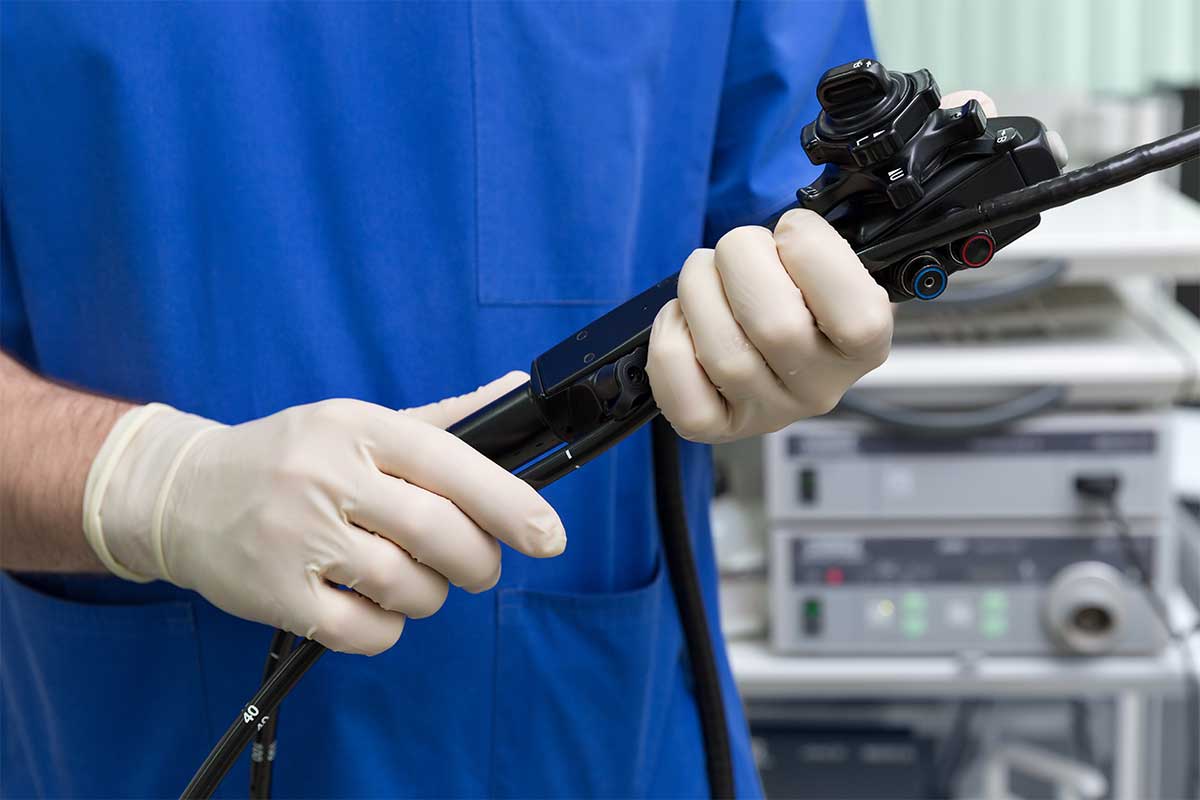
28
Mar
Can you get pancreatitis from an endoscopy?

It is possible, but very rare, to get pancreatitis from an endoscopy.
Can you get pancreatitis from an endoscopy?
Pancreatitis is a condition that occurs when the pancreas becomes inflamed. This inflammation can be caused by a variety of factors, including alcohol consumption, gallstones, high levels of triglycerides in the blood, and certain medications.
Pancreatitis After Endoscopy
Pancreatitis is a known complication of endoscopy, although it is a rare occurrence. Endoscopic retrograde cholangiopancreatography (ERCP), in particular, is associated with a higher risk of pancreatitis compared to other endoscopic procedures.
During ERCP, a contrast agent is injected into the pancreatic ducts to obtain images of the pancreas and the bile ducts. This can cause irritation or inflammation of the pancreas, leading to pancreatitis. Other factors that can increase the risk of pancreatitis after endoscopy include a history of pancreatitis, sphincter of Oddi dysfunction, and young age.
Symptoms of pancreatitis after endoscopy may include abdominal pain, nausea, vomiting, fever, and an elevated level of pancreatic enzymes in the blood. Treatment typically involves hospitalization, intravenous fluids, pain management, and monitoring for complications such as infection, organ failure, or bleeding.
If you experience symptoms of pancreatitis after an endoscopy, it is important to seek medical attention immediately. Your healthcare provider will evaluate your symptoms and determine the appropriate course of treatment.
How Is Pancreatitis Diagnosed
Pancreatitis is typically diagnosed through a combination of clinical evaluation, imaging studies, and laboratory tests.
- Clinical Evaluation: Your healthcare provider will ask you about your medical history, symptoms, and any risk factors for pancreatitis, such as a history of gallstones, alcohol use, or recent abdominal trauma. They will also perform a physical examination to look for signs of abdominal tenderness, swelling, or jaundice.
- Imaging Studies: Imaging studies such as a CT scan, MRI, or ultrasound may be ordered to visualize the pancreas and surrounding organs. These tests can detect inflammation or damage to the pancreas, as well as any complications such as fluid collections or pseudocysts.
- Laboratory Tests: Blood tests may be ordered to measure levels of pancreatic enzymes such as amylase and lipase, which are typically elevated in pancreatitis. Other blood tests can assess for signs of infection, liver or kidney dysfunction, or electrolyte imbalances.
In some cases, additional tests may be needed to determine the underlying cause of pancreatitis, such as ERCP to evaluate the pancreatic and biliary ducts or genetic testing to assess for hereditary pancreatitis.
If you are experiencing symptoms of pancreatitis, it is important to seek medical attention promptly for proper diagnosis and treatment.
Is Acute Pancreatitis a Complication Of Endoscopic Retrograde Cholangiopancreatography?
Yes, acute pancreatitis is a known complication of endoscopic retrograde cholangiopancreatography (ERCP), which is a diagnostic and therapeutic procedure used to visualize the pancreatic and biliary ducts. During ERCP, a flexible tube with a camera is inserted through the mouth, down the esophagus, and into the small intestine to access the pancreas and bile ducts. Contrast dye may be injected to help visualize the ducts, and instruments can be passed through the scope to remove blockages, take biopsies, or treat other conditions.
While ERCP is generally safe, acute pancreatitis is a potential complication, occurring in up to 5% of cases. The risk of pancreatitis is higher when certain factors are present, such as a history of pancreatitis, sphincter of Oddi dysfunction, young age, or the injection of large volumes of contrast dye.
The incidence of pancreatitis can be reduced by taking precautions such as avoiding excessive contrast dye and using prophylactic pancreatic stents. If pancreatitis does occur, treatment may involve hospitalization, supportive care, and interventions such as endoscopic or surgical drainage if necessary.
What Causes Acute Pancreatitis
Acute pancreatitis is a sudden inflammation of the pancreas, which can be caused by a variety of factors.
Some of the common causes of acute pancreatitis include:
- Gallstones: Gallstones can block the bile duct, which can lead to inflammation of the pancreas. This is one of the most common causes of acute pancreatitis.
- Alcohol consumption: Excessive alcohol consumption can irritate the pancreas and cause inflammation.
- High triglyceride levels: High levels of triglycerides in the blood can cause pancreatitis.
- Trauma: Injury to the abdomen, such as from a fall or car accident, can cause pancreatitis.
- Infections: Certain viral or bacterial infections, such as mumps or tuberculosis, can cause pancreatitis.
- Medications: Certain medications, such as steroids, antibiotics, or diuretics, can cause pancreatitis.
- ERCP: As mentioned earlier, endoscopic retrograde cholangiopancreatography (ERCP) can sometimes cause pancreatitis.
- Genetic factors: Some inherited genetic mutations can increase the risk of pancreatitis.
- Autoimmune diseases: Certain autoimmune diseases, such as lupus or autoimmune pancreatitis, can cause inflammation of the pancreas.
It is important to note that in many cases, the exact cause of acute pancreatitis may not be identified. If you experience symptoms of acute pancreatitis, such as severe abdominal pain, nausea, and vomiting, it is important to seek medical attention promptly for proper diagnosis and treatment.

